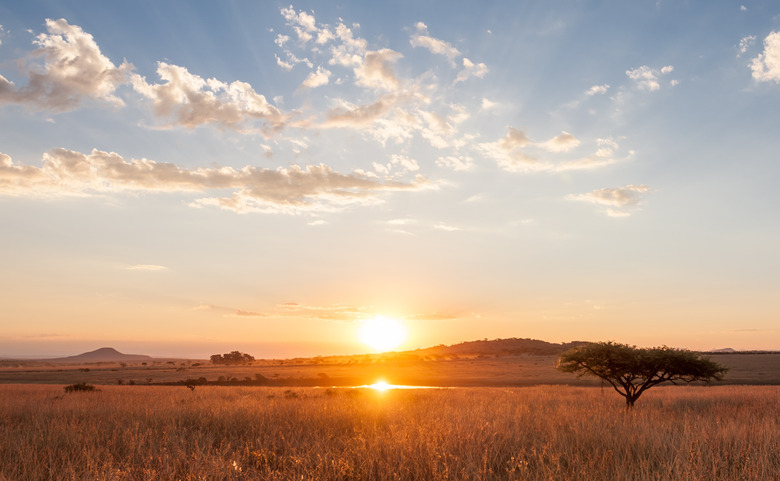Dangers To The Savanna Ecosystem
Like most biomes on Earth, the savanna ecosystem survives on a delicate balance among environmental factors and various species, including humans. Severe drought can rob these grasslands of their life-giving water and foliage, while poachers and indigenous peoples often threaten to disrupt the food web through the killing of animals for sport or survival.
Human Activities
Human Activities
Human activities can severely threaten to disrupt savanna ecosystems. Unsustainable water usage and irrigation methods could potentially dry up life-giving rivers and water holes. In regions where indigenous people regularly include bushmeat – wild meat – in their diet, ungulate populations have dropped at noticeable rates. Some savanna wildlife is also hunted as trophies; black rhinoceroses, in particular, are hunted for their valuable horns. Even some plant species are over-harvested due to their commercial value. Carvings made from African Blackwood, a savanna tree, are often sold at tourists' markets.
Drought and Heavy Grazing
Drought and Heavy Grazing
Prolonged, severe drought has a dangerous effect on a savanna ecosystem, with grazing patterns exacerbating this effect. The combination of severe drought and grazing can change a grassland of primarily edible, perennial grasses to a savanna dominated by inedible grasses and plants. Lightly grazed grasslands maintain their quality of palatable, perennial grass species, but the make-up of plant species could still be altered. Experts have called for grazing management solutions during drought episodes to affect the direction of potential change toward grassland sustainability.
Desertification
Desertification
Tropical savannas often border on arid, desert regions, and the spread of desert-like conditions into dry grassland areas is called desertification. This threat to a savanna ecosystem include effects caused by climate change, farming practices, overgrazing, aggressive agricultural irrigation, which lowers the level of the water table away from plant roots, deforestation and erosion. Each year, over 46,000 square kilometers of African savanna becomes desert. The planting of drought-resistant plants could stabilize shifting sand dunes and begin the proliferation of additional vegetation.
Carbon Emissions
Carbon Emissions
A 2012 survey attributed large increases in woody plant mass to the "CO2 fertilization effect." The authors posited that the increase in the rate of woody plant growth was caused by increasing atmospheric carbon dioxide. A dramatic increase in the amount of trees and shrubs could threaten the entire savanna ecosystem, as these plants use more water than grasses. Conservationists in Namibia have been reporting that woody plants have been impeding both antelope and the cheetahs that hunt them – a development that could have unknown repercussions across the grasslands.
References
Cite This Article
MLA
Smith, Brett. "Dangers To The Savanna Ecosystem" sciencing.com, https://www.sciencing.com/dangers-savanna-ecosystem-18220/. 9 March 2018.
APA
Smith, Brett. (2018, March 9). Dangers To The Savanna Ecosystem. sciencing.com. Retrieved from https://www.sciencing.com/dangers-savanna-ecosystem-18220/
Chicago
Smith, Brett. Dangers To The Savanna Ecosystem last modified August 30, 2022. https://www.sciencing.com/dangers-savanna-ecosystem-18220/
